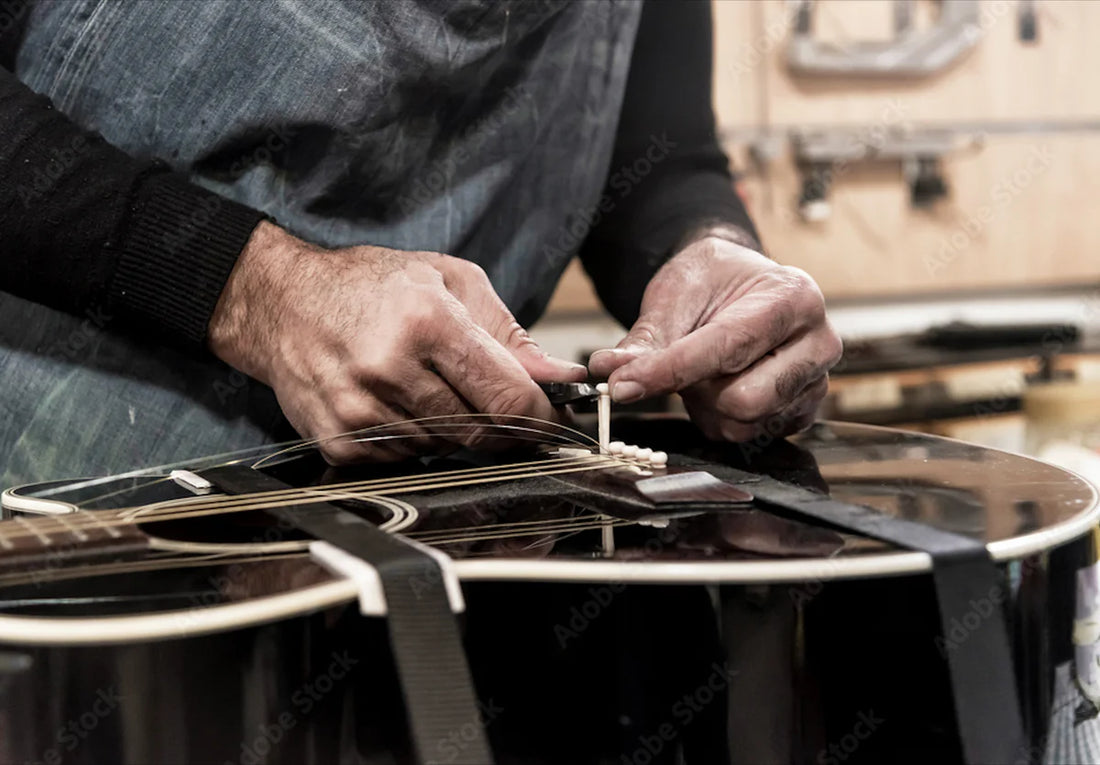GUARANTEED REPAIRS
OPTIMIZE YOUR INSTRUMENT'S PERFORMANCE
EXCELLENCE IN EVERY REPAIR
ENDORSED BY INDUSTRY LEADERS
As an authorized service center, Irvine Art & Music proudly collaborates with some of the most renowned musical instrument brands worldwide.
All Instructors
HOW OFTEN SHOULD I HAVE MY INSTRUMENT SERVICED?
Brass Maintenance Inspection
Brass Maintenance Inspection
Before Starting the Checklist:
- Identification and Documentation: Confirm that the serial number, instrument type, and customer repair ticket information are consistent and accurate.
- Customer Service Review: Review the services requested by the customer. Begin an initial assessment of the instrument to determine if an estimation for repairs is needed.
Initial Assessment Checklist:
- Cleanliness Check: Examine the instrument for signs of dirt, grime, lime scale, calcium buildup, or other debris.
- Damage Evaluation:
- Slide Inspection: Check the slides to ensure they are functioning properly and are free of damage or misalignment.
- Valve Test: Test the valves to ensure they move freely without resistance.
- Play Test: Conduct a play test, if the condition of the instrument permits, to further evaluate its functionality and playability. This will help assess the sound quality and mechanical operation.
- Instrument Case Inspection:
String Maintenance Inspection
Before starting the Assessment Checklist for a stringed instrument:
- Pegs: Verify that pegs turn smoothly, fit properly, and their string holes are not too close to the peg wall. Check for over-wrapped strings on the shaft.
- Caspari Pegs (if applicable): Ensure all tuners function correctly, turn easily, hold tune, and do not slip.
- Peg Cuffs and Head Screws: Confirm that peg cuffs are securely attached and peg head screws are snug.
- Nut: Inspect the nut for correct height, notches not being too deep, and ensure they are angled back into the peg box. Verify notches are evenly spaced and centered.
- Fingerboard and Neck: Check that the fingerboard and neck are free of tape and residue, and within acceptable parameters for warping, twisting, and back-bowing.
- Structural Soundness: Ensure the instrument is structurally sound, without any open seams, loose fingerboards, or cracks.
- Sound Post: Confirm the sound post fits well and is in the correct position.
- Bridge: Check that the bridge is correctly positioned, with properly fitted feet, correct cant, height, arch, and functional string notches.
- End Pin: Verify that the end pin is properly fitted.
- Tailpiece and Fine Tuners:
- Strings: Inspect strings for cleanliness, absence of excess rosin buildup, and ensure they are free of dings, kinks, and frays.
- Instrument's Condition: Check for dings, chips, and blemishes. Touched-up areas must be sealed with color matching the original tint as closely as possible. Ensure the instrument is polished but not oily.
- Cleaning: The instrument should be thoroughly cleaned of dirt and rosin buildup.
- Tuning: Ensure the instrument is tuned close to the proper pitch.
- Chinrest: Verify the chinrest is of correct size, not cracked or chipped, does not touch the tailpiece or top of the instrument, and is tight and secure.
- Bow Inspection: Ensure the bow is clean, with ample hair, and all components are in working order.
- Case Inspection: Check the case for damage, cleanliness, and functionality.
Woodwind Maintenance Inspection
Before Starting the Assessment Checklist:
- Verification of Details: Confirm that the serial number, instrument type, and customer repair ticket information are consistent and match.
- Service Review: Review the services requested by the customer. Start an initial assessment of the instrument to determine if an estimate for repairs is required.
Initial Assessment Checklist:
- Cleanliness Inspection: Check the instrument for any signs of grime, lime scale, calcium buildup, and other dirt or debris.
- Damage Assessment:
- Solder Joints: Ensure all solder joints are secure and intact.
- Parts, Corks, and Pads Inspection:
- Regulation and Motion: Check for proper regulation and eliminate any unwanted lost motion. All keys should move freely and quietly.
- Play Test: If the condition of the instrument allows, perform a play test to further assess its functionality and playability.
- Case Inspection: Examine the instrument case for damage, ensure it is clean, and verify that all functionalities (like locks and handles) are in proper working order.
How often should I have my instrument serviced?
We suggests having your instrument serviced twice a year to keep it in good playing condition. Winter and summer break are ideal times to bring your instrument in to be serviced.
How much will it cost to repair my instrument?
Repair pricing for common repairs is provided In-store. If you need additional services or are unsure what service is needed the repair shop will provide you with a repair free estimate!

Contact form




